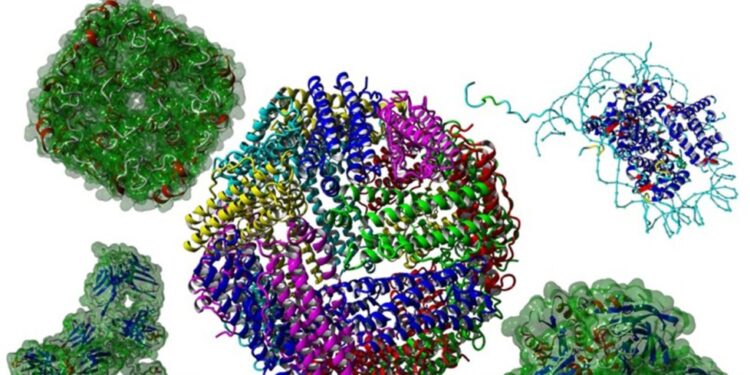Chemical reactions as the key to Alzheimer’s disease

Mass spectrometry and other analytical methods provide insight into the behaviour and chemistry of proteins in health and disease.
Picture: AK Lermyte
Collaboration between TU Darmstadt, British and US universities.
Research teams from TU Darmstadt, British and US universities are focusing on one possible main process that leads to the death of brain cells – chemical reactions between different proteins in the brain and essential metals such as copper and iron – in their investigation of the causes and mechanisms of Alzheimer’s disease. Their results are published in “Science Advances”.
Alzheimer’s disease causes tremendous loss of life years and life quality. Tens of millions of people worldwide have this disease, and this number increases every year.
The physical hallmark of the disease is the formation of small deposits of insoluble protein – known as amyloid – in the brain of patients; however, therapies that stop the formation of these deposits have failed to prevent disease progression. This indicates that these deposits might be a side effect rather than the cause of the disease.
Nanoparticles made of metallic copper and iron in the brain of patients
In recent years, it has been suggested that the main process that kills brain cells might involve chemical reactions between certain proteins in the brain and essential metals such as copper and iron.
Professor Dr. Frederik Lermyte from the Department of Chemistry at TU Darmstadt and Scientists from the University of Warwick, Keele University, the University of Texas at San Antonio, and Case Western Reserve University have now used a range of techniques to study this, including mass spectrometry and X-ray microscopy. They found that, in addition to the normal water-soluble forms of these metals, the amyloid deposits in the brain of patients with Alzheimer’s disease contain nanoparticles made of metallic copper and iron, which do not have any known role in human biology.
It is likely that the chemical reactions that result in the formation of these metals create reactive oxygen species that are toxic to brain cells. This potentially provides an important clue about the mechanism of Alzheimer’s disease, and future therapies could be developed to intervene in this process.
Publication
James Everett, Frederik Lermyte, Jake Brooks, Vindy Tjendana-Tjhin, Germán Plascencia-Villa, Ian Hands-Portman, Jane M. Donnelly, Kharmen Billimoria, George Perry, Xiongwei Zhu, Peter J. Sadler, Peter B. O’Connor, Joanna F. Collingwood and Neil D. Telling: „Biogenic metallic elements in the human brain?” in: Science Advances 09 Jun 2021, Vol. 7, no. 24, eabf6707
https://www.tu-darmstadt.de/universitaet/aktuelles_meldungen/einzelansicht_319872.en.jsp
Media Contact
All latest news from the category: Life Sciences and Chemistry
Articles and reports from the Life Sciences and chemistry area deal with applied and basic research into modern biology, chemistry and human medicine.
Valuable information can be found on a range of life sciences fields including bacteriology, biochemistry, bionics, bioinformatics, biophysics, biotechnology, genetics, geobotany, human biology, marine biology, microbiology, molecular biology, cellular biology, zoology, bioinorganic chemistry, microchemistry and environmental chemistry.
Newest articles

Innovative 3D printed scaffolds offer new hope for bone healing
Researchers at the Institute for Bioengineering of Catalonia have developed novel 3D printed PLA-CaP scaffolds that promote blood vessel formation, ensuring better healing and regeneration of bone tissue. Bone is…

The surprising role of gut infection in Alzheimer’s disease
ASU- and Banner Alzheimer’s Institute-led study implicates link between a common virus and the disease, which travels from the gut to the brain and may be a target for antiviral…

Molecular gardening: New enzymes discovered for protein modification pruning
How deubiquitinases USP53 and USP54 cleave long polyubiquitin chains and how the former is linked to liver disease in children. Deubiquitinases (DUBs) are enzymes used by cells to trim protein…



